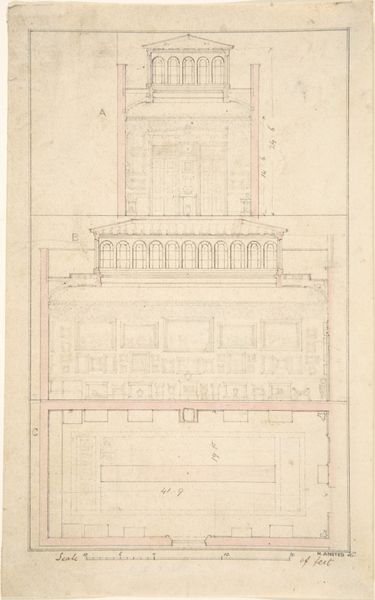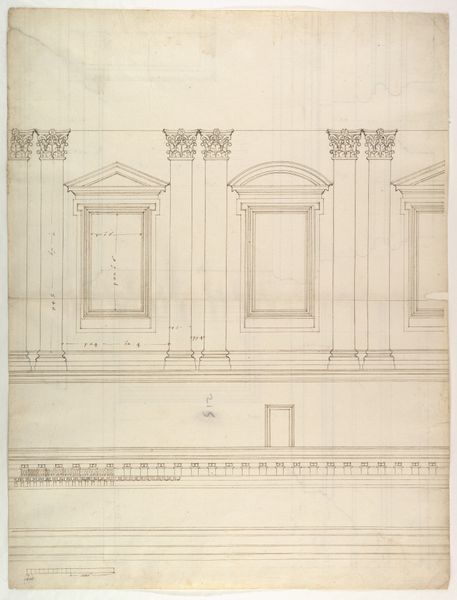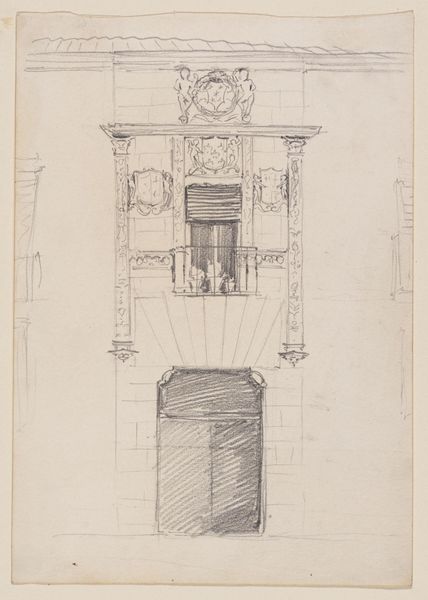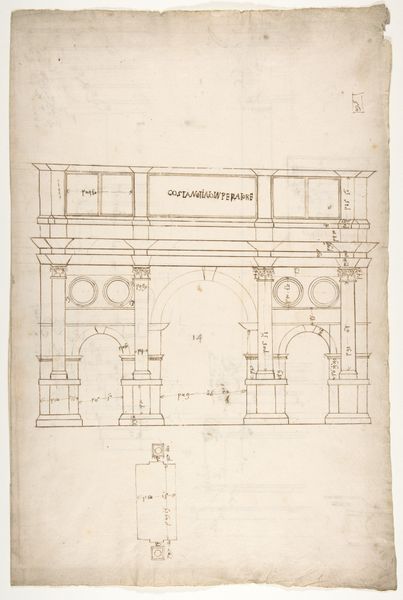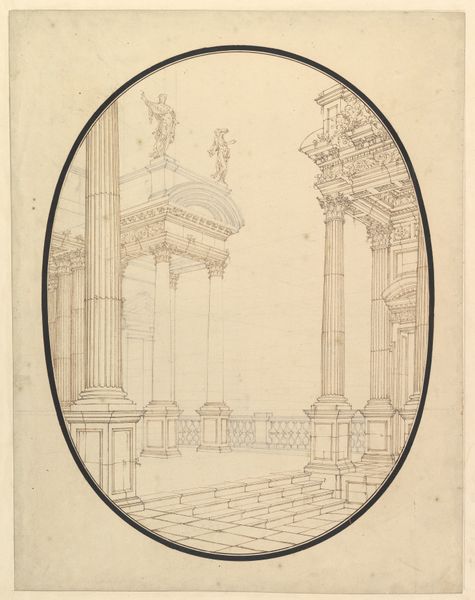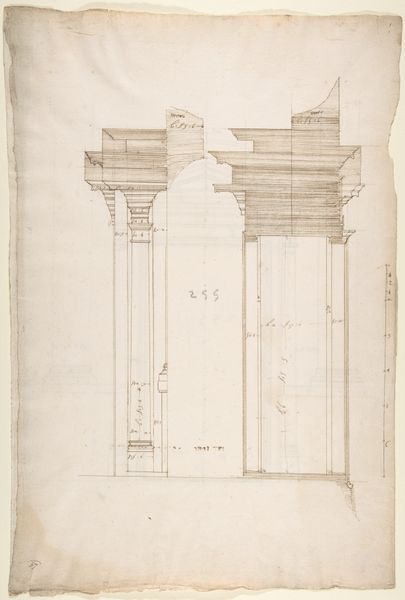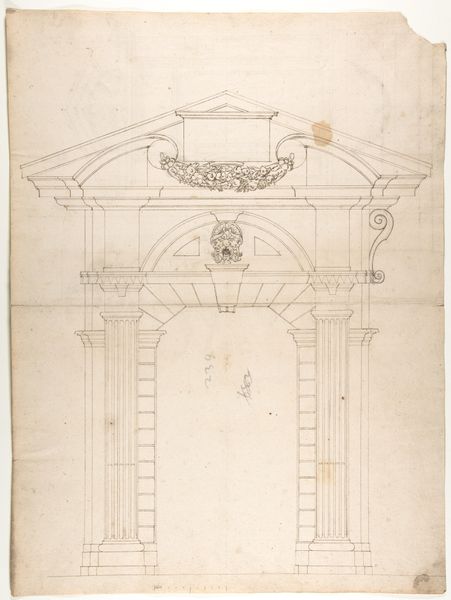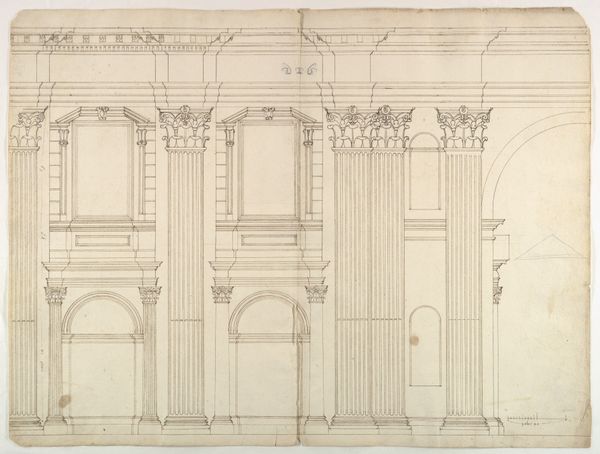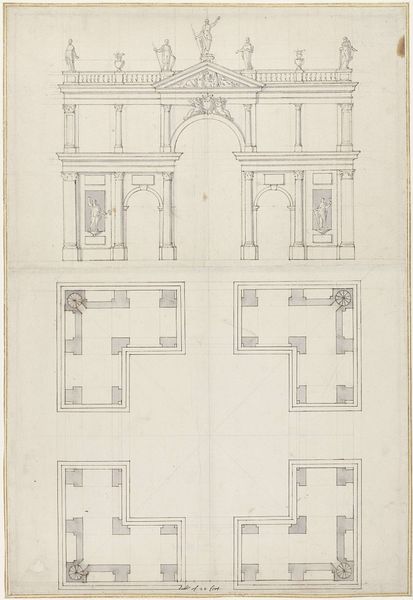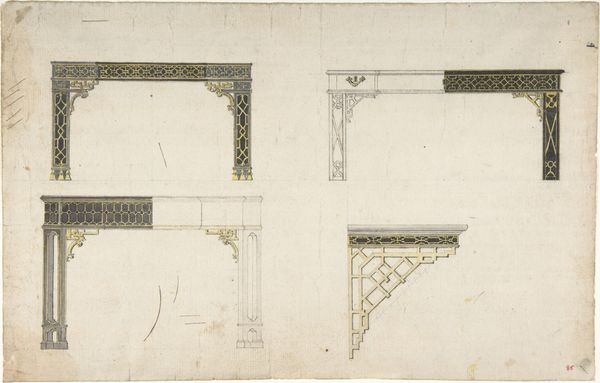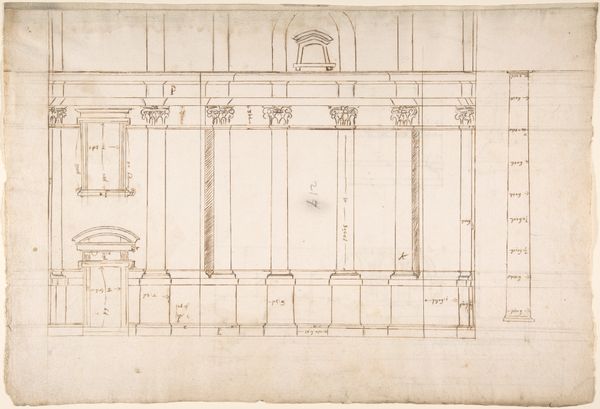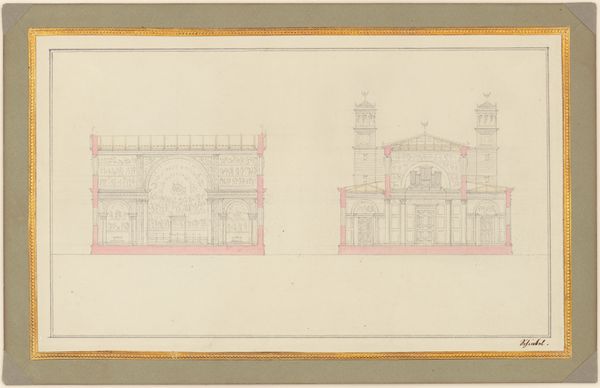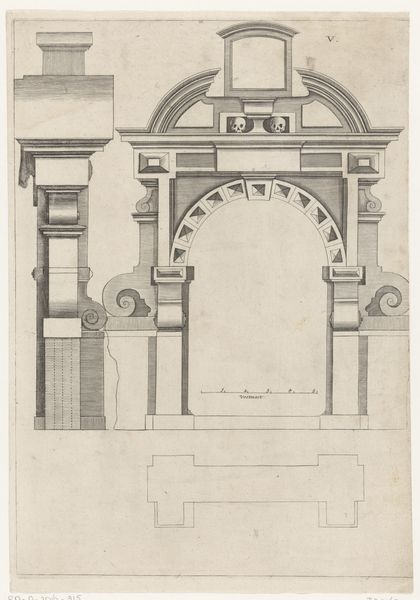
drawing, print, pencil, architecture
#
drawing
#
neoclacissism
# print
#
etching
#
form
#
geometric
#
pencil
#
line
#
architecture
Dimensions: sheet: 20 13/16 x 12 15/16 in. (52.8 x 32.8 cm)
Copyright: Public Domain
Curator: Here we have a fascinating “Architectural Drawing” from Nicolas François Barbier, dating roughly between 1780 and 1826. It’s currently held at the Metropolitan Museum of Art. Editor: Ah, a blueprint, literally. It's stark, you know? The precision feels…cold, but compelling, like staring at the bones of something magnificent before flesh and blood get in the way. Curator: Precisely. The work uses print, pencil and etching, manifesting key Neoclassical themes—especially form. Notice how the lines meticulously articulate the architectural structure and geometric shapes. This piece offers insight into the drafting processes during that era. The use of available materials like pencils was crucial in making these precise drawings. Editor: Those meticulously ruled lines… someone invested a serious amount of labor into this. It’s almost obsessive, the dedication required to capture all these angles and measurements. I wonder if the architect ever stepped back and thought, “What a soul-crushing job”. Curator: What strikes me is how this work invites reflection on the economic drivers of production and the status of architects in late 18th century society. Draftsmanship was a necessary and marketable skill within an emergent urban environment. Editor: True. And I’m just noticing—this isn't a pretty picture in the traditional sense, but the form creates a certain… harmony? A rhythm of right angles and sweeping curves, as austere as a Bach fugue. I can feel how I respond to it in my bones. Curator: Exactly, this resonates in Neoclassical style by returning to principles of order and reason, especially since drawing and printmaking facilitated its spread across workshops and patrons. The material and formal simplicity is, itself, a type of statement about value. Editor: I suppose, thinking about that economic exchange is vital because something had to give. Did artists compromise vision? Was creativity subservient to commerce? Questions, questions. All that pencil-pushing… Did Barbier realize they were sketching futures or signing away pieces of their soul? Curator: An interesting thought about that sacrifice in artistic integrity in favor of following current market values, and perhaps its relation to mental burdens. It adds to the appreciation, certainly. Editor: Definitely adds texture, even if just imagining things on my end! It makes me rethink that so called "precision"... Perhaps I would not call this as cold as a began thinking; but calculated, it breathes. Thank you, Nicolas! Curator: Indeed, it's the intersection of planning and construction that ultimately gives art its character, reminding us the crucial material foundation underlying imagination.
Comments
No comments
Be the first to comment and join the conversation on the ultimate creative platform.
